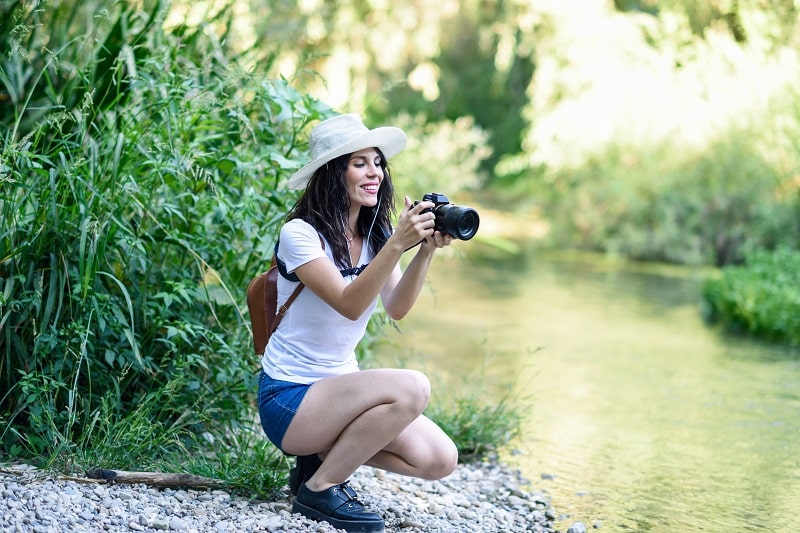Introduction to Mirrorless Cameras
Mirrorless cameras have become increasingly popular among photographers of all levels, offering a compact and versatile alternative to traditional DSLRs. With their lightweight bodies and advanced features, mirrorless cameras have revolutionised the way we capture images. In this article, we will explore the world of mirrorless cameras, discussing their advantages, technology, and how to make the most of their settings and controls.

Advantages of Mirrorless Cameras over DSLRs
One of the significant advantages of mirrorless cameras is their compact size and weight. Unlike DSLRs, which require a mirror and prism system, mirrorless cameras, such as the Sony A1, eliminate these components, resulting in a smaller and lighter body. This makes mirrorless cameras the ideal choice for photographers who are always on the go or those who prefer to travel light without compromising on image quality.
Another advantage of mirrorless cameras is their electronic viewfinder (EVF) system. Unlike DSLRs that use an optical viewfinder, mirrorless cameras employ an EVF, which displays a real-time preview of the image directly from the sensor. This allows photographers, using cameras like the Sony A7C, to see the exact exposure, white balance, and depth of field before even pressing the shutter button. With an EVF, you can achieve more accurate and consistent results, saving time and effort in post-processing.
Furthermore, mirrorless cameras excel in autofocus performance. With advanced autofocus systems that utilise phase-detection pixels on the sensor, mirrorless cameras can track subjects with remarkable precision and speed. Whether you’re capturing fast-moving action or shooting in low-light conditions, mirrorless cameras provide reliable autofocus capabilities that ensure your images are sharp and in focus.
Understanding Mirrorless Camera Technology
To fully harness the power of mirrorless cameras, it is crucial to understand their underlying technology. Unlike DSLRs, mirrorless cameras feature a digital sensor that directly captures the image without the need for a mirror to reflect light onto the sensor. This sensor is also responsible for the camera’s autofocus capabilities, as it uses phase-detection pixels to detect and track subjects.
Furthermore, mirrorless cameras employ interchangeable lenses, allowing photographers to adapt to various shooting scenarios. From wide-angle landscapes to telephoto wildlife shots, the versatility of mirrorless camera lenses provides endless creative possibilities. Additionally, many mirrorless cameras support lens adapters, enabling the use of lenses from other camera systems, expanding your lens options even further.
Another aspect of mirrorless camera technology is their video capabilities. With the absence of a mirror, mirrorless cameras can offer seamless and silent shooting in video mode. This makes them popular among videographers and content creators. Many mirrorless cameras also provide advanced video features such as 4K resolution, high frame rates, and professional-grade codecs, ensuring exceptional video quality.
Mastering Mirrorless Camera Settings and Controls
To maximise your creative potential and capture stunning images with a mirrorless camera, it is essential to master its settings and controls. Here are some key features to familiarise yourself with:
- Exposure settings: Understanding how to control aperture, shutter speed, and ISO will allow you to achieve the desired exposure for your images. Experimenting with different combinations of these settings will help you create a range of effects, from freezing motion to capturing long exposures.
- White balance: Adjusting the white balance ensures accurate colour reproduction in your images, regardless of the lighting conditions. Take advantage of the camera’s preset white balance modes or manually set the white balance for more precise results.
- Focus modes and points: Explore the various autofocus modes available on your mirrorless camera, such as single-shot, continuous, and tracking. Additionally, familiarise yourself with the different focus points and how to move them across the frame, allowing you to control the focus and composition of your images.
- Customizable buttons and menus: Mirrorless cameras often offer customizable buttons and menus, allowing you to personalise your shooting experience. Assign frequently used settings or functions to these buttons for quick access, saving you valuable time in the field.
By mastering these settings and controls, you will be able to unleash your creative potential and capture stunning images with your mirrorless camera.
Conclusion and Final Thoughts
Mirrorless cameras have undoubtedly transformed the world of photography, offering unmatched portability, advanced technology, and exceptional image quality. Whether you are a professional photographer or an enthusiast, embracing mirrorless cameras can take your photography to new heights. By understanding their advantages over DSLRs, delving into their technology, and mastering their settings and controls, you can maximise your creative potential and capture breathtaking images.
So, if you’re ready to elevate your photography game, consider investing in a mirrorless camera. With their compact size, advanced features, and outstanding image quality, mirrorless cameras are the perfect tools to unlock your creative vision and capture stunning photos.
Remember, the journey to mastering mirrorless camera photography is an ongoing process. Keep experimenting, learning, and pushing your boundaries to continually improve your skills and create images that leave a lasting impression.














